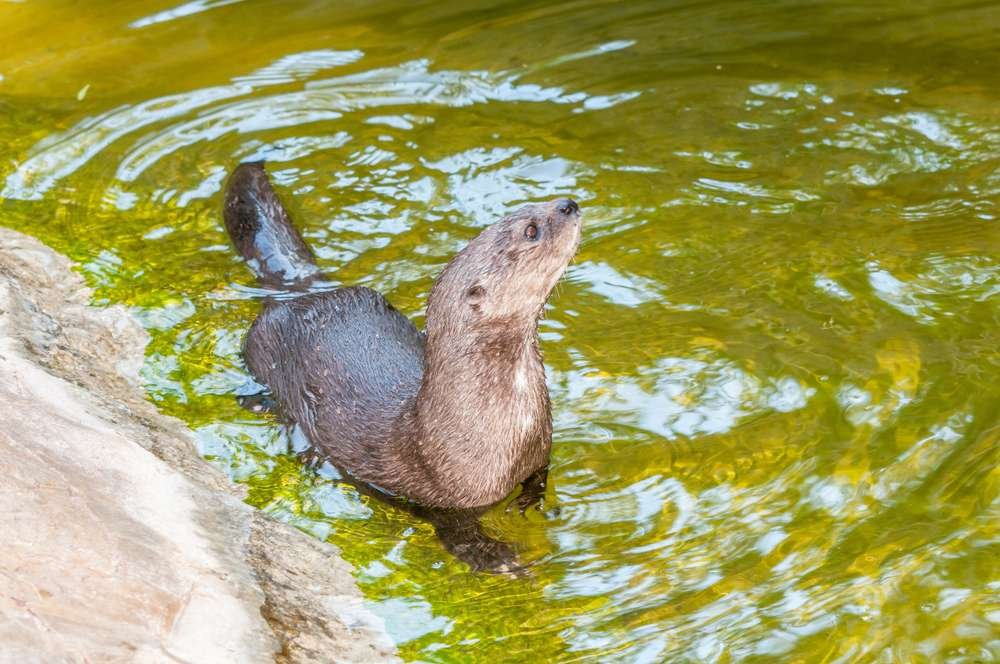Spotted Necked Otter
( speckle-throated otter )
- Hydrictis maculicollis
- IUCN Status: Near Threatened
- Trend: decreasing

General Information
The spotted-necked otter can be seen occasionally along the Kafue River, this small chestnut brown creature moves in small family groups, occasionally alone and usually at night. It preys on fish, crabs and frogs. It is smaller than the clawless otter.
Description
The spotted-necked otter is sleek, relatively small, has a muscular long tail and webbed paws for swimming. Females have two pairs of teats, and while males have a large scrotum, the penis is hidden beneath the skin, to reduce drag while swimming. Their fur is usually reddish to chocolate brown and marked with creamy or white blotches over the chest and throat. The head is broad with a short muzzle, small rounded ears, and a hairless nose pad. The teeth and jaw are adapted for consuming fishFun Facts
The spotted-necked otter is a sleek, social hunter of Zambia’s clear rivers, lakes, and rocky shorelines, instantly recognizable by its distinctive white-spotted throat and chest. Smaller and more agile than the clawless otter, this acrobatic swimmer thrives in oxygen-rich waters, where it chases fish with torpedo-like precision.
Their spots help cubs follow adults in murky water.
They “surf” river currents on their backs to save energy.
Ecology & Behaviour
Spotted-necked otters feed primarily on fish but also eat frogs and small crustaceans, especially when fish are in short supply. The otters are sometimes found in family groups, but appear to be social only under certain conditions. Males and females are separated for at least part of the year. They normally hunt alone, except when mothers are training their young, and are not territorial, sheltering through the night in short burrows, rock crevices, or patches of dense vegetation. On land, they travel mainly by the use of regular paths, and rarely move more than 10 m from river or lake banks. As with many other otters, these paths are marked by “sprainting” sites in which they habitually defecate and urinate.
Conservation
The spotted-necked otter is listed as “Near Threatened” on the IUCN Red list and is in decline, mostly due to habitat destruction and pollution of its clear-water habitats.
Distribution & Habitat
Spotted-necked otters are found in lakes and larger rivers throughout much of Africa south of 10°N. They are common in Lake Victoria and across Zambia, but for some unexplained reason often are absent from what appear to be suitable habitats, such as the lakes and rivers of East Africa and the Zambezi below Victoria Falls. No evidence of spotted-necked otters venturing into salt water has been found.
Interaction with Humans
They have been known to be hunted for bushmeat in some places.








